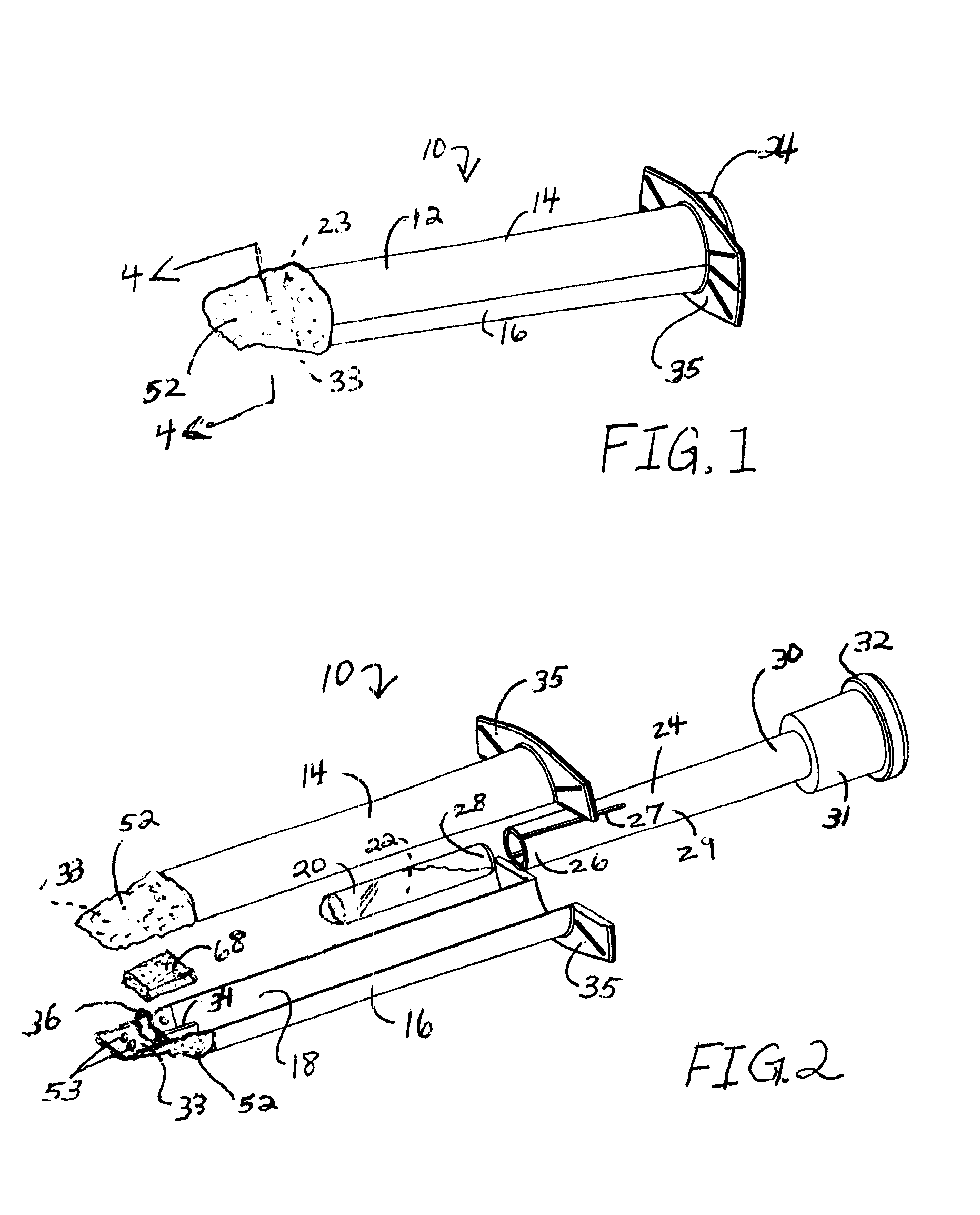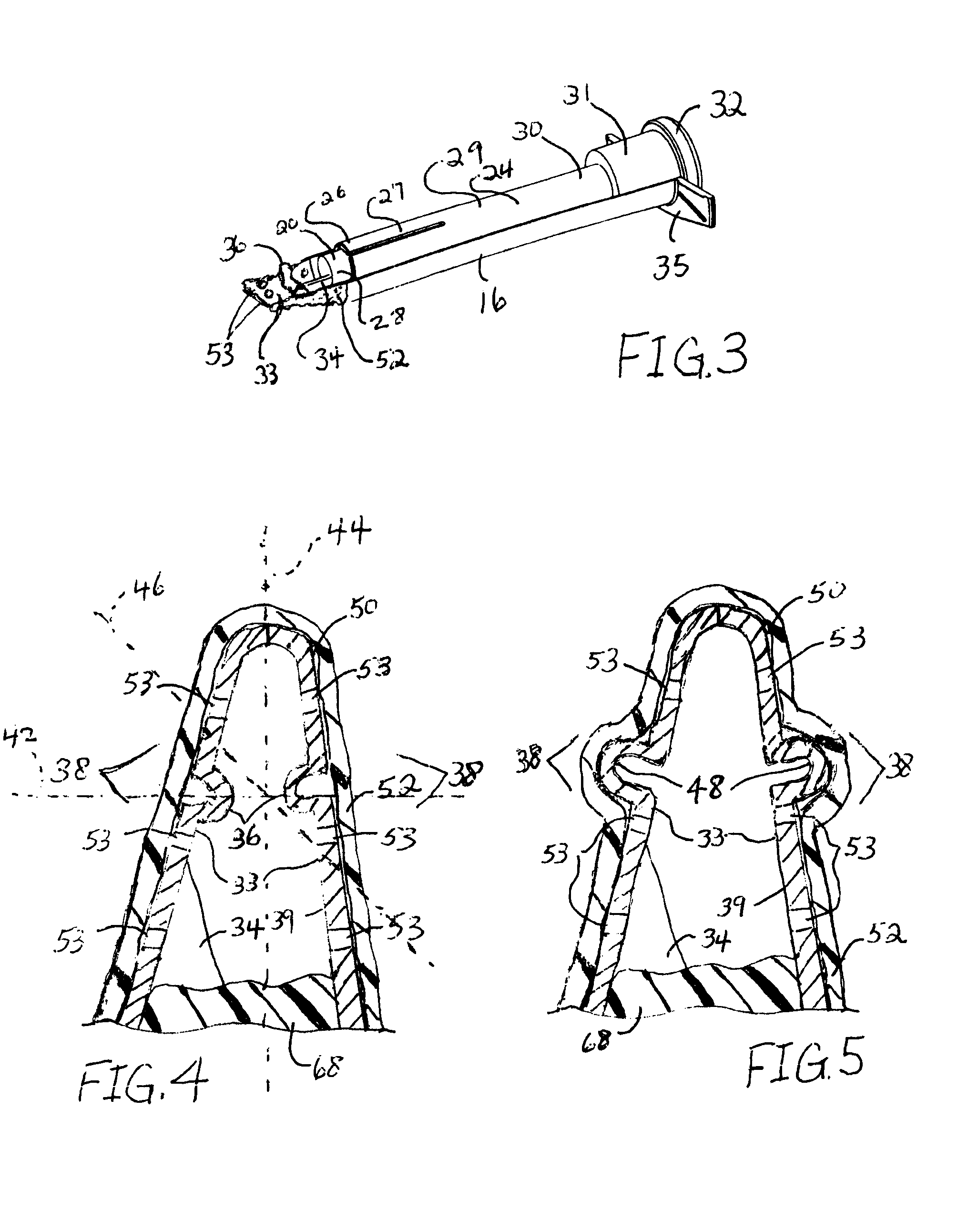Applicator with flexible dispensing end
a technology of flexible end and application, which is applied in the direction of pliable tubular containers, hand devices, carpet cleaners, etc., can solve the problems of significant patient morbidity and mortality, broken glass ampoules and dispensing liquids, and financial burdens of the health care system
- Summary
- Abstract
- Description
- Claims
- Application Information
AI Technical Summary
Benefits of technology
Problems solved by technology
Method used
Image
Examples
Embodiment Construction
[0034]Reference will now be made in detail to one or more embodiments of the invention, examples of which are illustrated in the drawings. Each example and embodiment is provided by way of explanation of the invention, and is not meant as a limitation of the invention. For example, features illustrated or described as part of one embodiment may be used with another embodiment to yield still a further embodiment. It is intended that the invention include these and other modifications and variations as coming within the scope and spirit of the invention.
[0035]Turning now to the drawings as illustrated in FIGS. 1-10, and in particular, to FIGS. 1-5, an applicator for a skin sealant is provided. As shown in FIGS. 1-3. The applicator 10 includes a housing 12. The housing 12 has a first side wall 14 and a second side wall 16 which are configured to be coupled together to provide the housing 12. The housing 12 has a generally hollow internal compartment 18, which is configured to hold a co...
PUM
 Login to View More
Login to View More Abstract
Description
Claims
Application Information
 Login to View More
Login to View More - R&D
- Intellectual Property
- Life Sciences
- Materials
- Tech Scout
- Unparalleled Data Quality
- Higher Quality Content
- 60% Fewer Hallucinations
Browse by: Latest US Patents, China's latest patents, Technical Efficacy Thesaurus, Application Domain, Technology Topic, Popular Technical Reports.
© 2025 PatSnap. All rights reserved.Legal|Privacy policy|Modern Slavery Act Transparency Statement|Sitemap|About US| Contact US: help@patsnap.com



